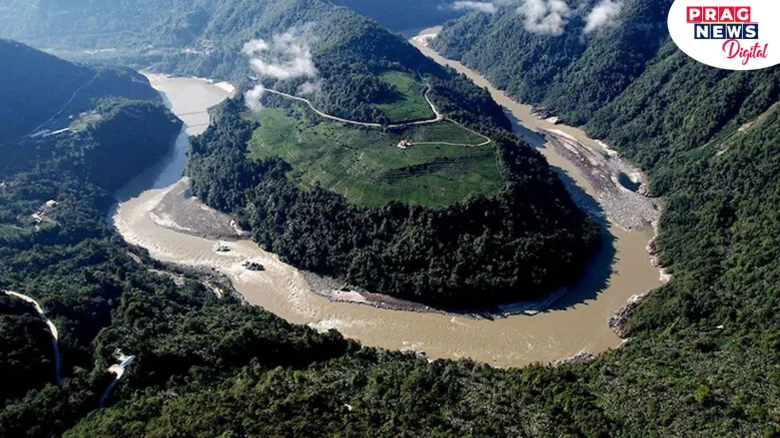China may be driven by its desire for the largest and most advanced infrastructure rather than actual energy needs.
Digital Desk: China introduced its major plans to establish the world’s largest dam over the Brahmaputra River also known locally as Yarlung Tsangpo. The proposed construction site will be positioned at the dramatic U-turn location of the Yarlung Tsangpo Great Bend because its geographical elements provide optimal conditions for power generation from hydropower facilities. The steep gradient requirements of hydroelectric dams find their ideal application at this particular location due to its perfect power production environment.
China aims to generate 60gigawatts (megawatts) of electricity from this project, which is part of its broader goal to meet net-zero emissions by 2030. Dam construction has reached 87,000 units across China making its ambitious project the most extensive worldwide. Critics have raised doubts about the need for such large-scale power generation projects because several observers believe China pursues this development mainly to build the biggest most technologically advanced systems regardless of energy requirements.
The proposed dam has raised significant concerns in neighboring India, primarily due to water security issues. The natural water flow of the Brahmaputra River from China to India poses risks to Indian water supply because India maintains the position of lower riparian state. Present-day conditions concerning multinational water resources such as the Nile match those of Egypt as the lower riparian which has traditionally held power over water resources. India experiences ongoing border tensions with Pakistan regarding the Indus Rivers because the Indus Waters Treaty gives Pakistan sole control over specific waterways but grants India authority over others.
In this case, the challenge emerges as China being the upper riparian state to both India and Bangladesh. The superior position of India regarding water control over Pakistan within the Indus basin confronts new challenges in regional water security from China's management of the Brahmaputra River's upper part.

Leave A Comment